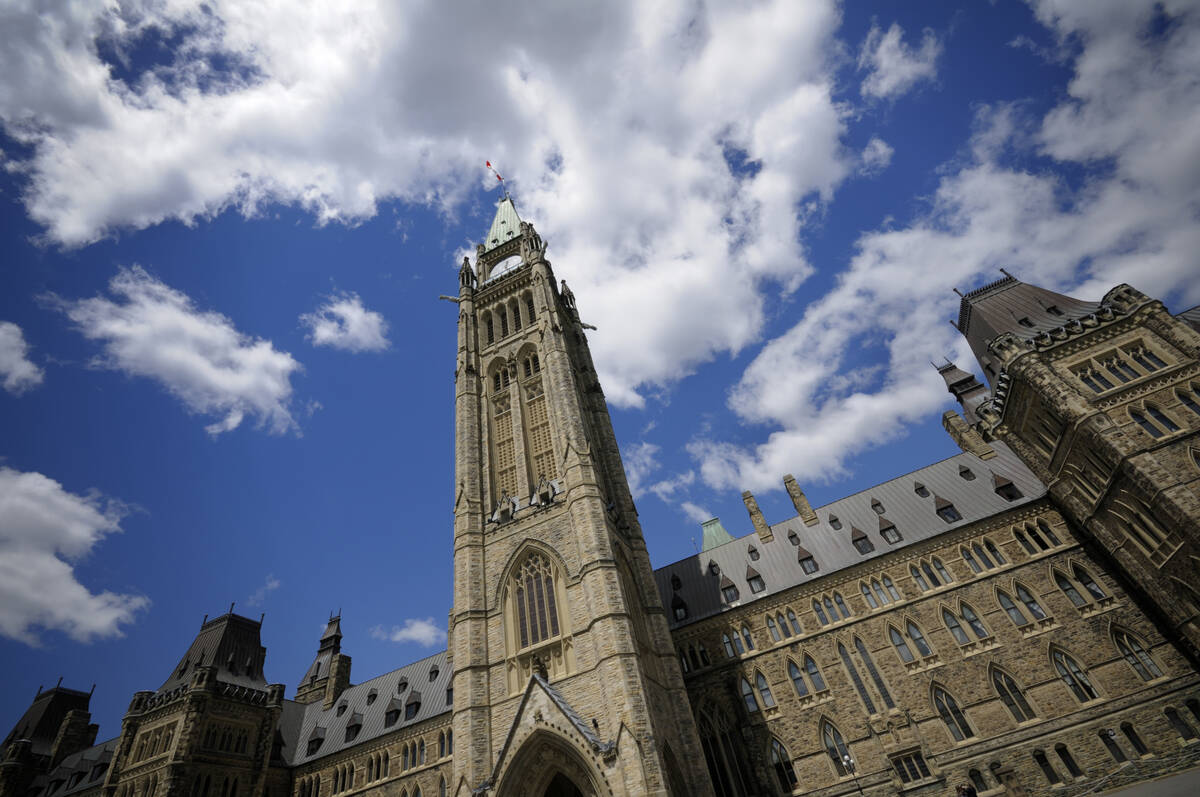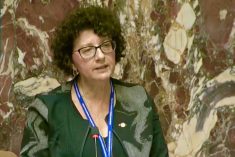No consensus on changes to business risk managements (BRM) programming was reached during the latest round of federal-provincial-territorial agriculture ministers’ meetings.
After the meetings ended Friday, federal Agriculture Minister Marie-Claude Bibeau explained Ottawa was willing to maintain the current cost sharing of the programs at a 60-40 split between her government and the provinces.
Bibeau’s proposal also includes an increase in the compensation rate offered under the AgriStability program, from 70 to 80 per cent, and a removal of the reference margin limit.
Removing reference margins will increase funding to farmers by more than 30 per cent, she said, and an increase in the compensation rate would bring funding to farmers up by more than 50 per cent.
Read Also

Budget 2025 includes trade focus, boost for agriculture risk management
The 2025 budget includes several investments relevant to the agriculture sector, including new trade corridors and financial supports for farmers
“While I believe the compensation rate is the best action to take, I’m prepared to consider other options,” Bibeau said. “But before we have this discussion on additional improvements, we have to agree on removing the reference margin limit.”
Bibeau brushed off a question on why she was taking such a firm position on removing the reference margin limit, and reiterated her proposal.
Ontario’s Agriculture Minister Ernie Hardeman said Friday’s meeting was the first time Bibeau had offered a counterproposal to the one made earlier this year by the provinces, which would have seen funding levels move from a 60-40 split to one where the feds would pay for 90 per cent of BRM costs.
“To put it in perspective, this was the first time we were able to send all the provinces back home with a concrete proposal,” he said.
“We’ve talked about hypotheticals, we’ve talked about changes some may like and some may not, but this is the first opportunity we’ve had where the federal government has laid the cards on the table and said, ‘This is my hand, do you want to play?’
“We need to provide the opportunity for everybody to consider that, to look over that, to find what the impact would be to their producers and to their treasury.”
Other provinces had previously expressed frustration over Ottawa’s lack of a counter-offer on AgriStability prior to the final meeting.
Bibeau, in turn, said she will “give time” to her colleagues to analyze the proposal and get back to her “as soon as possible.”
The Canadian Federation of Agriculture, in a separate release Friday, hailed Bibeau as “the first (agriculture) minister to deliver real action on this issue since 2013 by putting forth this proposal.”
Changes to the programs, particularly AgriStability, have long been sought. At the heart of the issue is the amount of money being made available to farmers applying to AgriStability, and the threshold that triggers the payments to them.
The program was designed as an income stabilization plan for farmers who experience large declines in income. Farm lobby groups have suggested the levels of losses required to trigger payments from the program are too high, and the compensation received is too low.
Making it easier for farmers to access those payments, while also increasing the money received, would be costly. Government estimates from 2019 suggest costs would increase by $400 million, but the federal government did not provide a cost analysis of the proposal made Friday.
Some provinces — particularly Manitoba and Saskatchewan — contend paying their share of the program is difficult given their financial situations.
Manitoba Agriculture Minister Blaine Pedersen this summer cast doubt on the prospect of reforms.
“We are not going there anytime soon just because of the cost implications for the Prairie provinces,” he told the Manitoba Co-operator’s Allan Dawson in June.
Moving AgriStability’s payout trigger to 85 per cent from the current 70, and eliminating the reference margin limit, would cost the Manitoba, Saskatchewan and Alberta governments millions of dollars more, he said.
Asked Friday if she sensed any progress was being made to find a positive outcome on the issue, Bibeau said she was “hopeful that we can reach consensus.
“I understand that some have a fiscal challenge, let’s say, but we are talking about business risk management programs so it’s kind of an insurance for farmers and it would pay out only if they have a bad year, so I’m hoping we can reach this consensus and proceed with the changes as soon as possible.”
Grain Growers of Canada, in a separate release Friday, said it “recognizes the unique fiscal challenges faced by the provinces as they consider the next steps” for the program, but added that “agriculture is more than worth the investment in order to drive an economic recovery — and support the food security of Canadians.”
Canadian Pork Council chair Rick Bergmann, citing Statistics Canada data to show revenue has fallen more for hog producers than for “most other sectors,” said the provinces “will fail most farmers if they choose not to fund fixing AgriStability when they are spending $1 billion on crop insurance.”
No timeline or deadline was provided in Friday’s communique on when the provinces are expected to respond to Ottawa’s offer.
Prospects of a short-term solution now seem unlikely. If the provinces accept Bibeau’s proposal, the changes could be implemented retroactively to cover the 2020 program year.
The ministers’ statement Friday “demonstrates that some progress has been achieved,” the CFA said in its release, but added that “all levels of government need to come together and finalize an agreement over the coming weeks.”
“While these proposals are not exactly what we were seeking, they are a very positive step forward for the business environment of Canadian agriculture,” CFA president Mary Robinson said in the same release.
“AgriStability has not provided a sufficient financial backstop for farmers since the cuts were made in 2013 and these shortcomings have been magnified by the impacts of COVID-19 on the industry,” she said.
Canada’s BRM programs, she said, “no longer reflect the risk profile of Canadian agriculture and must be improved.”
— D.C. Fraser reports for Glacier FarmMedia from Ottawa. Includes files from Glacier FarmMedia Network staff.
















